[103rd Cruise Report]Hobart (Tasmania) – Learning about nature conservation and walking through primary forests (Part One)
Jan.24th
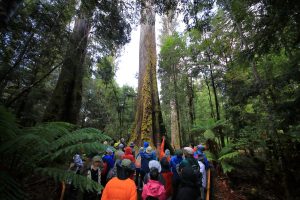
Today the Ocean Dream docked in Hobart, on the island of Tasmania, located in the southeast of Australia. We took part in an optional programme “learning about nature conservation and walking through primary forests”. Approximately 45% of the island of Tasmania is covered by national parks and nature reserves, and although Tasmania is known for its lush nature, logging of the precious few primary forests still takes place today, place the forests in grave danger. We went to see what a logging site looks like, and to think about the present and future of these primary growth forests.
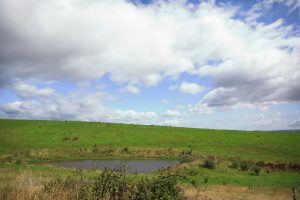
Getting onto the bus, the logging site was located in the Styx Valley approximately two hours away, allowing us to enjoy the tranquil Tasmanian wilderness on the way.
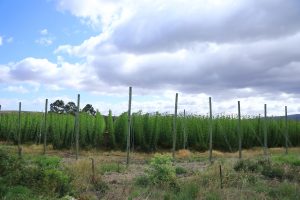
We saw many beautiful sites, including wild hops, one of the main ingredients used in making beer.
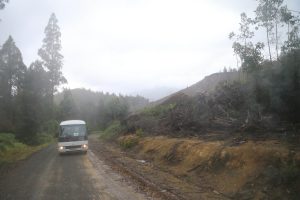
After a while the bus left paved roads for a dirt road as it climbed the mountain, and soon we were enveloped in mist, and later rain. The windows fogged up, but wiping away the mist we were then confronted by a completely different scene stretching out before us.
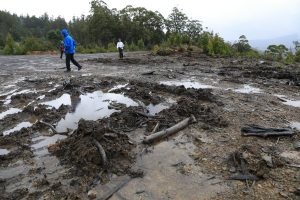
In just a few minutes we arrived at the Styx Valley, and were confronted by an arresting site as we disembarked. We stood in what clearly had been a logging site, and looking around it was hard to imagine that a forest had even been here to begin with.

Firstly we heard from David our counterpartner organisation, the Wilderness Society Tasmania (WST).
(WST is an NGO established in Hobart, Tasmania in 1976, and currently works nationwide around Australia promoting nature conservation and opposing the logging of primary growth forests)
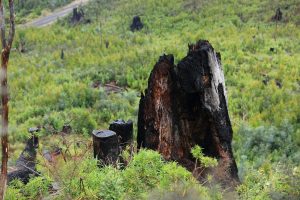
“It’s now been two years since this site was logged, and although it has been burned to help with the revegetation, the burning process itself releases large amounts of carbon into the atmosphere and is very bad for the environment. The forest will probably be cut down again 100 years from now.” Looking around we could see there were a few charred remains around us.
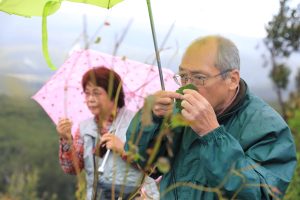
David went on “this primary growth forest won’t come back. Even if it did, it would take approximately 400 years. However this place has been replanted with eucalyptus (to be cut down in 100 years time), so the primary growth forest now can’t come back, and this will disrupt the natural ecosystem of the area.” David picked a leaf from a nearby tree for us to smell, and it had that very recognisable, distinctive smell. It was eucalyptus, and already part of the land had been replanted with it.
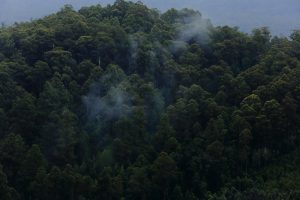
After the logging site, we made our way towards a protected big tree area. Tasmania’s primary growth forests are registered as a World Heritage Site, and is the only site in the world to fulfil all four categories of the natural World Heritage Site criteria.
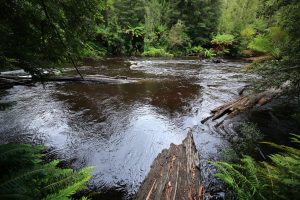
Along the way, we stopped by the Styx River, where we saw a pitch black river! David explained that the eucalyptus oil from the trees seeps into the river, giving it a dark tint, but due to the recent lack of rain, the amount of oil in the river had decreased slightly.
